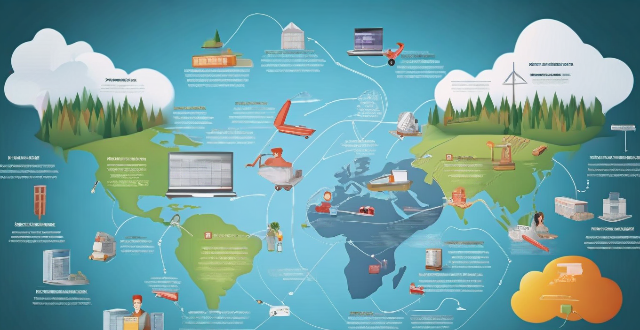This article outlines best practices for managing risk associated with climate change in a global supply chain. It suggests assessing climate change risks by identifying potential impacts and evaluating vulnerabilities, developing a risk management plan that includes setting clear objectives and implementing mitigation measures, and monitoring and reviewing performance through tracking progress against objectives and continuously improving strategies. Key strategies include diversifying supplier networks, investing in resilient infrastructure, improving energy efficiency, enhancing supply chain transparency, promoting sustainable practices, establishing regular reporting processes, benchmarking against industry standards, soliciting stakeholder feedback, revising risk management plans regularly, participating in collaborative learning opportunities, and fostering a culture of innovation within the organization.

Best Practices for Managing Risk Associated with Climate Change in a Global Supply Chain
Introduction
Climate change poses significant risks to global supply chains, including disruptions to production, transportation, and distribution. To manage these risks effectively, organizations must adopt best practices that prioritize sustainability, resilience, and adaptability. This article outlines some of the key strategies for managing risk associated with climate change in a global supply chain.
1. Assess Climate Change Risks
Identify Potential Impacts
- Extreme Weather Events: Floods, droughts, hurricanes, and other extreme weather events can disrupt supply chain operations, causing delays and damage to facilities and inventory.
- Supplier Disruptions: Climate change can impact suppliers' ability to produce goods or services, leading to shortages or quality issues.
- Transportation Challenges: Changes in weather patterns and infrastructure damage can affect transportation routes and schedules, increasing costs and delivery times.
- Regulatory Changes: Governments may implement new regulations or policies related to climate change that could impact supply chain operations and compliance requirements.
- Market Demand Fluctuations: Consumer preferences may shift towards more sustainable products or services, affecting demand and requiring adjustments to supply chain strategies.
Evaluate Vulnerabilities
- Supplier Analysis: Assess suppliers' exposure to climate change risks and their preparedness levels.
- Infrastructure Review: Examine the vulnerability of transportation infrastructure, warehouses, and other facilities to climate-related hazards.
- Stakeholder Engagement: Collaborate with customers, suppliers, and other stakeholders to understand their perspectives on climate change risks and potential impacts on the supply chain.
2. Develop a Risk Management Plan
Set Clear Objectives
- Sustainability Goals: Establish specific goals for reducing greenhouse gas emissions, improving energy efficiency, and promoting renewable energy sources throughout the supply chain.
- Resilience Targets: Define targets for enhancing the supply chain's ability to withstand and recover from climate-related disruptions.
- Adaptation Strategies: Outline plans for adapting to changing climate conditions, such as diversifying supplier networks or investing in resilient infrastructure.
Implement Mitigation Measures
- Diversify Supplier Networks: Reduce dependence on single suppliers by developing relationships with multiple suppliers in different geographic regions.
- Invest in Resilient Infrastructure: Upgrade facilities and transportation systems to better withstand extreme weather events and other climate-related hazards.
- Improve Energy Efficiency: Implement energy-saving measures, such as using LED lighting, optimizing heating and cooling systems, and adopting renewable energy sources like solar or wind power.
- Enhance Supply Chain Transparency: Use technology tools like blockchain or digital twins to track products' journey through the supply chain, enabling faster response times during disruptions.
- Promote Sustainable Practices: Encourage suppliers and customers to adopt eco-friendly practices, such as reducing waste, conserving resources, and minimizing packaging materials.
3. Monitor and Review Performance
Track Progress Against Objectives
- Regular Reporting: Establish a regular reporting process to measure progress against sustainability goals, resilience targets, and adaptation strategies.
- Benchmarking: Compare performance against industry standards or peer groups to identify areas for improvement and share best practices.
- Stakeholder Feedback: Solicit feedback from customers, suppliers, employees, and other stakeholders to assess the effectiveness of risk management efforts and identify opportunities for enhancement.
Continuously Improve Strategies
- Adaptive Planning: Revise risk management plans regularly to account for evolving climate conditions, technological advancements, and changing market dynamics.
- Collaborative Learning: Participate in industry forums, workshops, and conferences to exchange knowledge and learn from other organizations' experiences in managing climate change risks.
- Innovation Incentives: Foster a culture of innovation within the organization by offering incentives for employees who develop new ideas or solutions for addressing climate change challenges in the supply chain.